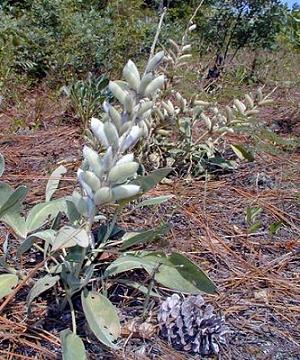Already in the XNUMXs (in the last century), an assumption was developed that was accepted by the conservationists, that "it is desirable, right and good to connect isolated reserves in corridors that will allow the free passage of biological species"

Already in the XNUMXs (in the last century), an assumption was developed that was accepted by nature conservationists, that "it is desirable, right and good to connect isolated reserves in corridors that will allow the free passage of biological species", the assumption was based on logic and general feeling, "intuition", which says that reserves "Islands" enclosed within agricultural and built-up areas degenerate and lose their vitality.
Against the corridors there were claims that these could be death traps mainly for animals that would be harmed while passing through the corridors, by cars on the roads or by farmers and others who would see animals in the passage as a risk to their tame or themselves, therefore in many cases when these corridors passed through populated areas special passages were built which were supposed to allow animals to pass safely without direct contact at the edge of the corridor. Thus, these corridors enabled the migration of biological species according to the changing conditions in their habitats, "traditional" seasonal migration or migration due to local changes - dryness, abundance of food and water, etc.
In Canada and the USA, reserves are linked by corridors, such as the crossings that were opened between Yellowstone and the Yukon. On the Canada-US border, reserves are being established on both sides of the border. In India, a corridor (60 km long and 10 km wide) will be opened between tiger habitats. In the eastern Himalayas - to the west of the Ghats. In Tsila, they are opening a passage between Bio-Bio (B?o B?o) and private reserves in the area. In southern Africa, reserves are connected by creating "cross-border reserves", in East Africa wildebeest migration is allowed through agricultural areas, and in this way an "intuitive" idea of preserving nature is being realized.
Now, a study carried out by researchers at the University of California (Santa Barbara) has given a scientific basis for the need for corridors. The research published in Science monthly turns "emotional theory" into practical proof.
A team led by the ecologist Ellen Damschen inspected areas in South Carolina, where pine groves (Pinus palustris) grow, which are the "native" trees in the area, the groves are surrounded by pine species that were planted / "imported" for the purpose of the wood industry. The planted pines created barren areas for other species, six plots of Pinus palustris forest that survived, each about half a dunam used as a model, some of the plots were connected to each other by narrow corridors, corridors created by the removal of the "foreign" trees, other plots were left isolated .
In a period of five years (2000-2005), 20% more plant species grew in the connected plots than in the isolated plots, despite the fact that the soil and climate conditions in all plots are equal.
The corridors allowed the passage of seeds by birds and mammals, pollination by insects as well as free competition for resources, competition between plants and animals, competition that strengthens the species.
Despite the relatively short time in which the test was conducted, the data were clear and convincing. That is, by linking "islands" and providing the possibility of movement, the size of the biological diversity, an increase that enables a rich and diverse stable existence for plants and living in the reserves. Thus, an "intuitive" assumption that was applied, tested and proven as a scientific fact and gives practical support for the need to create corridors that will connect reserves, corridors to life.
